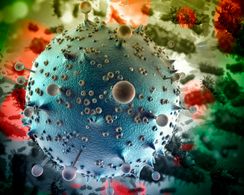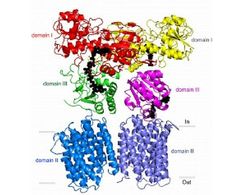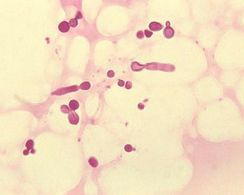

25 Mar, 2015 | by Labroots
Beating Antibiotic-Resistant BacteriaAt the end of 2014 the British government released a frightening report about antibiotic-resistant superbugs. The report says higher rates of drug-resistant bacterial infections could result in 10 million deaths a year by 2050 and calculated the financial toll to be $100 trillion. Antibiotic-resistant infections are rising and foiling efforts to reduce death rates in developing countries where uncontrolled...... Read More

06 Mar, 2015 | by Labroots
Dogs Can Read Your Facial ExpressionsDog lovers would be the first to agree that these faithful companions know when their human friends are happy or sad. Those who have a dog in their lives are completely convinced that their beloved pets are in tune with their moods and ready to comfort at any time. Scientific research however has never been able to prove this level of knowledge by dogs. That could be changing with a study done in Austria...... Read More

26 Feb, 2015 | by Labroots
Living Bacteria Captured by X-RayFor the first time, living bacteria have been captured by X-ray, researchers report. Researchers from Uppsala University are working at the Department of Energy's SLAC National Accelerator Laboratory, Menlo Park, Calif, which is operated by Stanford University. This discovery, which offers a fresh way to view active biological samples, could lead to X-ray forays into mechanisms integral to biology,...... Read More

25 Feb, 2015 | by Labroots
Brief Periods of Exercise Offer No Protection from a Sedentary LifestylePeople should aim to cut time spent sitting by two to three hours in a 12-hour day Even people who engage in regular exercise cannot escape health risks posed by spending the majority of their day planted in a seat. Researchers have found that sedentary spells are linked with higher risks for heart disease, diabetes, cancer, and death. The meta-analysis study, which combed through studies concentrating...... Read More

24 Feb, 2015 | by Labroots
Tools, Not Teeth, Telltale Clue to Fewer Viral DNA Remnants?Scientists have found peopleâs genes havenât retained as many fragments of viral DNA as other mammals, maybe due in part to our adoption of tools in lieu of teeth during conquest. Thus, exposure to viruses lurking in the blood may have been lessened. This is not to say people donât harbor bits of DNA from viruses that bugged our ancestors millions of years ago, we do. Retroviruses can penetrate...... Read More

23 Feb, 2015 | by Labroots
Road to Bubonic Plague Less Congested Than ThoughtScientists find just a few microbes are needed to infect lymph node, cause disease A long-held theory about how bubonic plague is caused has been flipped on its head, according to scientists. Researchers from the UNC School of Medicine found that instead of using host cells, some of the plague-causing bacteria travel to lymph nodes in small numbers. The thinking was that bacteria that cause bubonic...... Read More

04 Feb, 2015 | by Labroots
Protein Essential for Cell Health is Avid Multitasker: TH is among least-studied mitochondrial enzymesResearchers have found that a protein vital for cell health that has recently been associated with cancer and diabetes, can juggle its cellular to-do listâin effect having two alike protein parts split the workload. A key protein for most life formsâthe TH enzyme (transhydrogenase)âworks inside mitochondria. âDespite its importance, TH has been one of the least-studied mitochondrial enzymes,â...... Read More

16 Jan, 2015 | by Labroots
Ben Gurion University of the Negev Researchers FindCan a new use for an established drug make an even greater impact than the current one? Some researchers in Israel think so. Scientists at Ben Gurion University of the Negev (BGU) in Beershaba, Israel, have found that the anti-inflammatory drug alpha-1 antitrypsin (AAT), now used to treat type 1 diabetes and various inflammatory problems, may prevent severe infections in people with compromised immune...... Read More

15 Jan, 2015 | by Labroots
Clash of the GalaxiesWhen stars collide, itâs not always in a Hollywood action film or on the red carpet. In a much more star-studded event than any movie premiere or awards could ever be, NASA has captured images of a collision of galactic proportions. Through the use of NASAâs Nuclear Spectroscopic Telescope Array, or NuSTAR, researchers have been given a look at a true blockbuster of a galactic merger. The unprecedented...... Read More

14 Jan, 2015 | by Labroots
Malassezia Yeasts’ Problemmatic FeastsWherever you look, theyâre there: Malassezia yeasts. The lipid-dependent fungi are lurking, colonizing the skin on people, warm-blooded animalsâas far afield as the recesses of the ocean, in deep-sea ventsâand in places far and wide in between. In our skin, the Malassezia disintegrates the fats and uses them for fuel. Researchers examine the possibility that harmful reactions can occur as the...... Read More